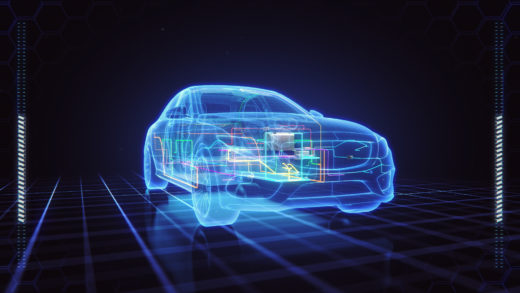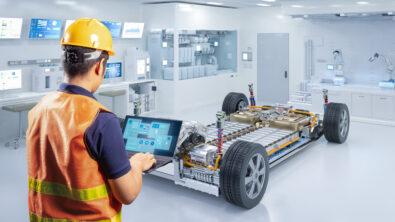When Will Autonomous Vehicles Arrive?
Autonomous vehicle are already being tested on the road and will be available soon but developers need tools now to be ready.
By John Blyler
Some predict that driverless cars are decades away. While this may be the case for fully autonomous, SAE Level 5 driving, it isn’t true for many vehicles that drivers will see over the next 4 years. Indeed, Elon Musk has stated that Tesla will have key technologies ready next year with expectations for government approval by 2021. Both Ford and Toyota plan to deploy self-driving cars of varying levels of autonomous capabilities within the next 4 years. Indeed, such cars are already being tested on the road.
Many players are trying to play catch-up in the growing autonomous market (e.g., Apple iCar). Others are more fully realizing the daunting nature of the task both in the design and testing areas. Design challenges abound but equally important are the testing, validating and verification (V&V). Concerning the latter, many wonder if current vehicle-level testing will be enough to meet mandated safety and reliability requirements per ISO 26262. This may mean that the availability and feasibility of adequate V&V testing may actually limit the functionality of autonomous driving. In other words, if a particular feature set cannot be verified or validated as required, then that feature and functionality will not be permitted in the vehicle.
For example, extensive testing will be needed to ensure the plethora of sensors, cables-networks, electronics subsystems and RF-wireless generating packages will work together under severe environmental and electro-magnetic conditions. Due to the criticality of autonomous vehicle sensors operations, sensor electronics design must also ensure signal integrity. Electromagnetic interference is a big challenge for radars.
However, desired design goals like small form factors and functionality consolidation for signal processing in the sensors may result in unwanted heat buildup that will impact overall performance and the reliability of the sensors. This may deter sensor size and cost reduction efforts. Reliable estimation of sensor thermal behavior can help hardware engineers to achieve the desired size and thus cost reduction.
Another problem will be the vast number of validation and verification cycles needed before deploying self-driving cars. The alternative — billions of miles of road tests to build a comprehensive library of deterministic if-then rules — is clearly untenable. Emulation will be a must for OEMs to test, verify and validate prototype development and production units.
Advanced automotive electronics designs will also present many challenges to the traditional PCB system design flow. Optimization of PCB design must be balanced with verification and manufacturing realities in the layouts of electronics throughout the vehicle. Here, too, thermal simulation and testing considerations pose particular manufacturability challenges given today’s shrinking PCB sizes and power demands.

Connecting everything together presents additional considerations. Electronic and electrical cabling-network system design trade-offs must be evaluated early in the development process to help deal with complexity and optimize the overall design. These activities are essential to ensure that the end-product satisfies stringent automotive reliability and quality standards for signal integrity, power management, EMI, and adequate thermal flow throughout the system. Also, it would be nice if the final design was proven to be manufacturable.
To appreciate more about the interplay between design, verification and validation, please read Mentor’s latest whitepaper:”Engineering Challenges for Viable Autonomous Vehicles“
Comments
Leave a Reply
You must be logged in to post a comment.



More robust cybersecurity and V2V will be needed to have viable autonomous vehicles. – Ben @ EdlavitchLaw.com